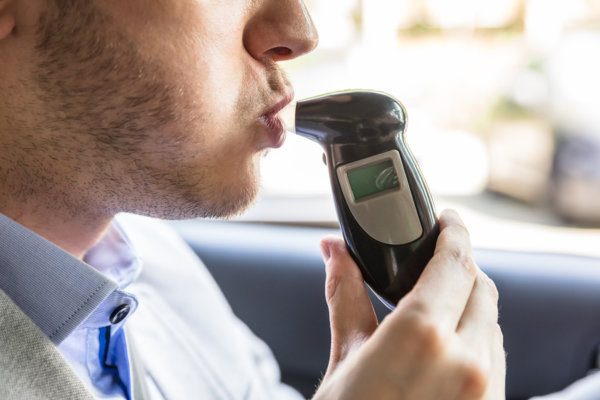
How Long Does Alcohol Stay in the Body? – On average, a normal liver can process about 10 grams of ethyl alcohol, or one drink per hour. Alcohol can be identified in urine for up to 80 hours after consumption, and on the breath and in saliva for as long as 24 hours after the last drink. It can also be found in hair follicles for up to three months.
Shortly after consuming a drink, around 20% of the alcohol travels into blood vessels that it comes in contact with on its way to the stomach and then goes straight to the brain. The remaining 80% travels into the small intestine, where it is absorbed into the bloodstream. This initial process occurs relatively quickly, but alcohol is then metabolized much more slowly by the liver.
The point in which blood alcohol concentration (BAC) is highest before it is broken down is called the peak BAC. The duration of this peak depends on the potency and amount of alcohol consumed.
How Long Does Alcohol Stay in the Body?
Although the rate at which a person becomes intoxicated depends on individual characteristics, alcohol is metabolized at about the same rate for everyone, assuming they have a normal liver. Other factors that may influence the rate of intoxication include the following:
- Age and sex
- Ethnicity
- Body fat percentage
- The rate of alcohol consumption
- Amount of food and fat content of food in the stomach and intestines
- Other over-the-counter, prescription, or illicit substances present in the body
NOTE: A standard drink of alcohol is defined as 12 ounces of beer, 5 ounces of wine, or one ounce of liquor/spirits.
Testing for Alcohol
Alcohol tests may be employed for a number of reasons, such as field sobriety testing (breathalyzer), pre-employment screening, routine workplace testing, and for probation or parole.
If a urine test is performed for alcohol detection, it can only reveal whether it is present, but not the person’s current BAC. Modern technology allows law enforcement to identify the presence of alcohol in the urine of an excessive drinker for up to 80 hours.
Blood testing for alcohol is considered to be the most reliable and accurate method available. Unlike urine tests, a blood test can reveal a person’s precise BAC at the time the test is administered.
The most common test for the presence of alcohol, however, is a breath test, commonly known as a breathalyzer. Although this method is not as reliable or accurate as a blood test, it is useful for determining whether a person has been drinking and can estimate BAC. The breathalyzer is the standard field sobriety test used by law enforcement in the U.S. because it is easily administered, less invasive than a urine or blood test, and results are immediate.

Alcohol Addiction
The consumption of alcohol, even if it’s occasionally excessive, doesn’t necessarily indicate a person is an alcoholic. That said, if the use of alcohol consistently threatens to undermine everyday responsibilities, this may indicate the presence of an alcohol use disorder. The terms alcohol abuse and alcoholism (or being an “alcoholic”) are non-clinical terms that refer to varying degrees of alcohol use disorder (AUD), a diagnostic term used by medical and mental health professionals.
A diagnosis of AUD requires the presence of specific criteria and can include a wide range of cases, from someone who spends more money on alcohol than they can reasonably afford, to someone who regularly blacks out or commits violence while intoxicated. A hallmark indication of alcohol addiction is the inability to stop drinking despite the incurrence of adverse consequences.
Alcohol consumption lessens inhibitions and can lead a drinker to behave in ways they otherwise might not. Because drinking is socially acceptable, if not at times lauded, in many cultures alcohol addiction is a ubiquitous problem. Statistics routinely reveal the staggering association between alcohol use and crime rates.
Effects of Alcohol
The effects of alcohol often begin as pleasant, which is the main reason why people enjoy drinking. Nevertheless, there are many negative short- and long-term side effects and very few, if any, positive long-term effects of alcohol use. Alcohol’s short-term impact on the body is closely related to the person’s BAC.
Short-Term
Short-term effects include the following:
At 0.03–0.12% BAC:
- Increased self-confidence
- Reduced attention span
- Flushed face or skin
- Improved mood and reduced anxiety
- Impaired motor coordination
- Reduced ability to execute good judgment
At 0.09–0.25% BAC:
- Sedation
- Memory loss
- Blurred vision
- Impaired balance and equilibrium
- Reduced comprehension and reaction speed
- Sensory impairments
At 0.25–0.40% BAC:
- Amnesia
- Staggered movements
- Nausea and vomiting
- Incontinence
- Reduced heart rate
- Transient consciousness or unconsciousness
At 0.35–0.8% BAC:
- Absent pupillary light reflex
- Respiratory depression
- Stupor
- Dangerously slow heart rate and weak pulse
- Coma
- Death
Alcohol Poisoning

A BAC of 0.40% or above can prove life-threatening in many cases. Depending on tolerance, when a person reaches this level, coma or death may be imminent. If someone you know appears to be experiencing severe alcohol poisoning, please call 911 immediately. Do not let them “sleep it off” or leave them alone until help arrives.
Hallmark symptoms of alcohol poisoning include the following:
- Confusion
- Severely impaired coordination
- Vomiting
- Seizures (uncommon)
- Reduced body temperature (hypothermia)
- Paleness or bluing of the skin (cyanosis)
- Loss of consciousness or passing out
- Severely depressed breathing (less than eight breaths per minute)
Long-Term
Long-term effects of alcohol abuse include the following:
- Gastrointestinal ulcers
- Increased blood pressure
- Anemia
- Interrupted brain development
- Wernicke-Korsakoff syndrome
- Destruction of brain cells
- Cognitive impairments and reduced capacity for abstract reasoning
- Memory loss and poor attention span
- Reduced sperm count and sperm production
- Liver diseases such as hepatitis B or C and cirrhosis
Moreover, long-term alcohol abuse increases the risk of heart attack and stroke, as well as that of mouth, larynx, pharynx, breast, esophageal, and gastrointestinal cancers.
Tolerance, Dependence, and Withdrawal
The more a person consumes alcohol, the higher their tolerance becomes. Tolerance is an altered state produced in response to excessive alcohol use that occurs because the body compensates for its presence by dedicating more enzymes to metabolize it more efficiently. This reaction results in a diminished response to alcohol as a result of repeated exposure.
Regarding tolerance, in essence, the body treats alcohol as a poison or toxin, which it is. The liver clears the blood of alcohol at a relatively constant speed. Intoxication occurs when alcohol is consumed at a rate that is faster than the liver can effectively process it. An extreme level of intoxication is also referred to as alcohol poisoning or an alcohol overdose, which occurs when a person consumes an excessive amount of alcohol in a relatively brief period of time.
Tolerance is a defense mechanism used by the body, and effectively reduces a person’s risk of alcohol poisoning. While tolerance does not always coexist with alcohol dependence, the development of a high tolerance is a tell-tale sign of severe alcohol abuse or addiction.

Alcohol dependence is characterized by the brain’s need for alcohol to function normally and the onset of withdrawal symptoms when he or she tries to quit or drastically cut back. These symptoms can range in intensity from mild to severe, and, in extreme cases, result in life-threatening complications or even death.
Symptoms of alcohol withdrawal include the following:
- Sweating
- Headache
- Loss of appetite
- Restlessness
- Insomnia or nightmares
- Depression and/or anxiety
- Shakiness and tremors
- Irritability and moodiness
- Nausea and vomiting
- Confusion or mental fog
- Fever
- Racing heart or palpitations
- High blood pressure
- Impaired mental function
- Hallucinations
- Extreme disorientation
- Seizures
- Delirium tremens
Alcohol withdrawal can also induce severe blood pressure changes, which, in turn, can precipitate a heart attack or stroke.
Treatment for Alcoholism
Alcoholism is a serious and oftentimes devastating disease that can cause a myriad of health problems, financial and/or legal trouble, and put tremendous strain on interpersonal relationships. The longer that active alcoholism remains unaddressed, the greater the chance that these problems, as well as others, will occur.
Alcoholism is a chronic disease, and, unfortunately, there is no perfect cure. Almost no one who is an alcoholic can return to “normal” drinking or functioning, or fully recover their lives when they are engaging in any form of alcohol consumption.
Fortunately, alcoholism is very treatable. Modern treatment employs approaches that are clinically proven to be effective and heavily based in psychotherapy, counseling, group support, and medication-assisted treatment.
Recovery By The Sea offers these services in both partial-hospitalization and outpatient formats. We provide our clients with the tools and support they need to achieve sobriety, prevent relapse, and enjoy long-lasting wellness.
If you believe that you or someone you love is struggling with alcoholism, please contact us as soon as possible to discuss treatment options. We show clients how they can make their lives better and look forward to a fulfilling future free from drugs and alcohol!